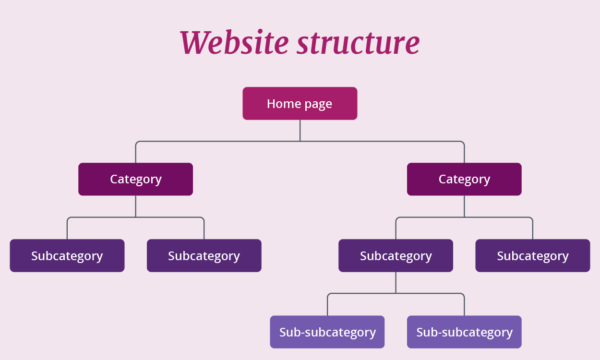
When building a website for a business with one Google My Business (GMB) location, structuring your site the right way can significantly influence your rankings, especially in local search. While there’s no single formula for site structure, there are multiple proven frameworks that consistently deliver results across nearly every niche — from home services and healthcare to legal, beauty, and trades.
One of the most effective strategies involves starting with your main category, building out ancillary topics, detailing your core services, creating area served pages, and finally publishing local landing pages enriched with contextual content about the location itself. Here’s a breakdown of how to implement this.
Start with Your Main Category
Your main category should reflect your core business identity. If you’re a personal injury lawyer, the main category is “Personal Injury Law.” If you run a nail salon, it’s “Nail Salon.” This becomes the core silo of your site.
Example URL Structure:/personal-injury-law//nail-salon/
You’ll want to write long-form pillar content for this main category, optimized for broad-intent keywords and written in a way that introduces your expertise. This page becomes the hub for all related content.
Build Ancillary Content Supporting the Main Category
Once the main category is set, add ancillary pages. These are educational or supporting blog-style pieces that answer questions or cover related subtopics. For a personal injury lawyer, these might include:
- “What to Do After a Car Accident”
- “How Long Do Personal Injury Claims Take?”
Each ancillary page should internally link back to the main category page using relevant anchor text like “learn more about our personal injury services” or “our legal team can help with injury claims.”
Add Core Service Pages
Next, create a page for each specific service you offer. These pages are the backbone of your conversion funnel and should be optimized with service-specific keywords.
Examples:
/car-accident-lawyer//motorcycle-injury-attorney//manicures//eyelash-extensions/
Each service page should link back to your main category page and be linked to from the category page using keyword-rich anchor text such as “our car accident attorney services” or “professional manicures in [City].”
Create Area Served Pages
Area served pages are city-specific or neighborhood-level pages designed to capture localized traffic outside your exact GMB address. These are not your primary location pages but help expand your local relevance.
Examples:
/service-area/nixa-mo//service-area/rogersville-mo/
These pages should briefly describe your services, include some context about serving the area, and link back to both service pages and the main location page. Use anchor text like “offering personal injury representation in Nixa” or “get eyelash extensions near Rogersville.”
Build Location Pages
This is your main local landing page tied to your GMB. It’s often the highest-converting and most important local page on your site. Go beyond just listing services — add local flavor:
- Talk about the city’s history
- Mention local landmarks
- Show involvement in the community
- Include photos of your business in that area
- Embed your GMB map
Example:/locations/springfield-mo/
The location page should link to every core service page, using clear, action-driven anchors like “Explore our car accident legal services in Springfield.” Likewise, every service page should link back to this location page using context like “serving clients in Springfield, Missouri.”
Link Everything Intelligently
Internal linking is what ties this structure together. You want strong, relevant anchors pointing from each service page to the location page and vice versa.
Examples of smart internal anchor text:
- From Service Page → Location Page:
“Looking for an experienced personal injury lawyer in Springfield? Visit our Springfield location.” - From Location Page → Service Page:
“Learn more about our car accident legal services in Springfield.”
You should also create ancillary blog posts that naturally link back to both services and location pages, ensuring a strong, interwoven mesh of relevant, helpful internal links.
Summary
This type of structured website works in virtually any local niche because it reflects how users search — first by category, then service, then location. Here’s the exact order to build:
- Main Category Page
- Ancillary Pages (Blog)
- Service Pages
- Area Served Pages
- Location Page
Internally link all service pages and area pages to and from the location page. Use local, relevant anchors. This structure not only organizes your site logically but feeds into local SEO signals, helping your single GMB location dominate the local pack and organic results.